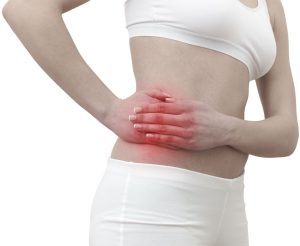Suspect you have a kidney stone? Learn how are kidney stones diagnosed using advanced imaging and discover modern treatment options at St Pete Urology. Get clarity now.
Continue reading7 Common Symptoms of Kidney Stone and Treatment Options
The symptoms of kidney stones are largely determined by the size of the stones. For small kidney stones, the symptoms may be mild. In fact, small stones may go undetected and pass out of the body painlessly during urination. The most common symptom of kidney stones is pain which begins as a vague sensation then becomes sharp and severe as ureter muscles contract and relax around the stones. Initially, the pain is felt on the flanks or on the sides of the body, between the pelvis and ribs, including the lower back and upper abdomen. Later it moves to the groin or testicles as the kidney stone moves through the urinary tract.
Generally, the symptoms of kidney stones follow the migration of the stone across the urinary tract. The symptoms will depend on whether the stone gets stuck in the kidney, begins to travel down the ureter, or causes an infection.
Therefore, depending on the size of the stone, symptoms may include:
- Sharp, persistent and severe ache in the side and back, often below the ribs
- Pain which spreads to the groin and lower abdomen
- Pain occurring in waves and with fluctuating intensity
- Pain when passing urine
- Restlessness and inability to lie still
- Nausea and vomiting
- Red, pink or brown urine
- Foul smelling or cloudy urine
- Urge to pass urine more often than usual
- Urinating small quantities of urine
- Chills and fevers if there is an infection
Blood in urine, often caused by the stone scratching the ureter or kidney
A kidney stone may cause an infection when it has blocked the ureter, preventing waste products from passing the blockage and resulting in bacterial build-up. It is the infection that causes symptoms such as fever, chills and shivering, diarrhea, foul smelling and cloudy urine, and fatigue.
 If you have these symptoms, it is important to see a physician, preferably a urologist. The doctor will perform a medical and symptomatic history, give a physical exam and order the necessary tests to confirm the presence of kidney stones and determine their size, location and appropriate treatment. The tests may include blood tests (like uric acid, calcium and phosphorous), tests for stone-forming salt crystals, infections, blood cells and stone factors, kidney function tests, and imaging tests (kidney ultrasounds, CT scans, MRI scans, abdominal X-rays and intravenous pyelograms). The urologist will recommend appropriate treatment after confirming the presence of stones.
If you have these symptoms, it is important to see a physician, preferably a urologist. The doctor will perform a medical and symptomatic history, give a physical exam and order the necessary tests to confirm the presence of kidney stones and determine their size, location and appropriate treatment. The tests may include blood tests (like uric acid, calcium and phosphorous), tests for stone-forming salt crystals, infections, blood cells and stone factors, kidney function tests, and imaging tests (kidney ultrasounds, CT scans, MRI scans, abdominal X-rays and intravenous pyelograms). The urologist will recommend appropriate treatment after confirming the presence of stones.
If small, less-troublesome stones are detected, the urologist may recommend drinking 8-16 cups of water to flush them out. Along with the recommendation to drink plenty of fluid, the urologist may prescribe pain relievers such as ibuprofen, naproxen sodium or acetaminophen. In some cases, the urologist may offer a medication to help pass small stones from the kidney. The medication, called an alpha blocker, helps to relax ureter muscles and allows the stones to move quickly and painlessly out of the urinary tract.
Large stones are accompanied by various symptoms and should be treated using stronger measures. The urologist may use sound waves to break up the stones, a procedure called extracorporeal shock wave lithotripsy (ESWL). In some cases, the urologist will use a scope (a thin lighted tube equipped with a camera) to remove the stones. The urologist may also opt for percutaneous nephrolithotomy to surgically remove large stones, or even parathyroid gland surgery when necessary.
At St Pete Urology, we have experienced urologists and state-of-the-art facilities to ensure prompt diagnosis and effective treatment of kidney stones. If you have questions about this condition, visit St Pete Urology in St Petersburg for quality medical care.


